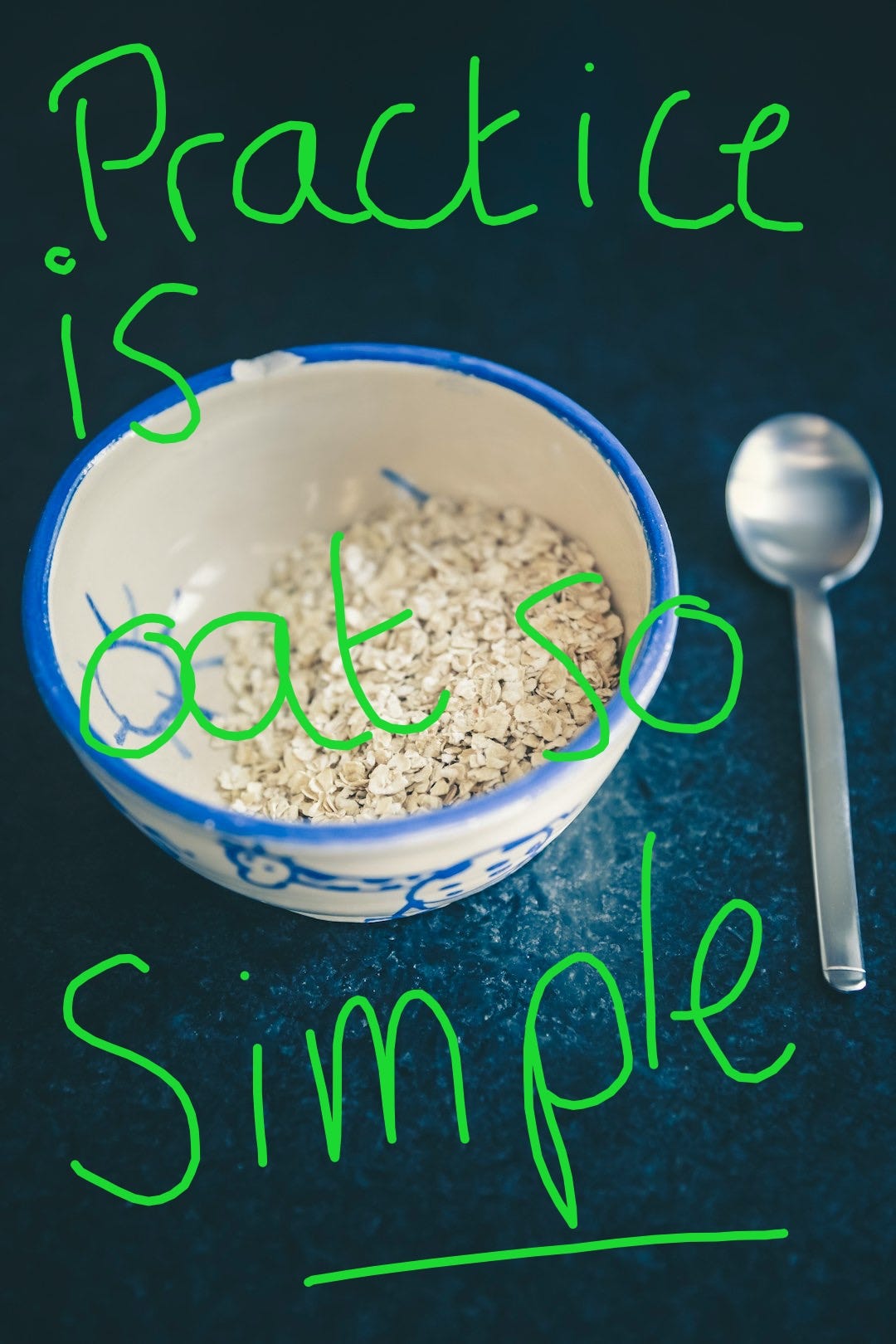
God had a funny plan for me, I would say, as my entire life, including this day, this very moment of writing, this moment narrating what I’ve written, is pretty much consumed with the experience that I cannot sit nor stand straight. At least not in the way I continue to desire to. Perhaps like the ‘heaven’ portrayed in scripture, and sold to us over this millennium’ is similar, as many friends and folk alike have flat out told me to stop pursuing this need to liberate myself from the knots and contortions my spine has so far successfully carried. Because this ‘heaven’, this freedom I pursue is untenable like the story in the bible. Yet this stuck, disconnection and twistedness continuously informs me of its presence, and ironically, the more success I have in releasing towards this ephemeral upright, the more upright I look, yet the more deeply I experience the discomfort.
Now, I recognise this isn’t the best beginning to an essay trying to advertise to reader and listener the sheer wonder this spinal 8 sequence holds. Yet, it gives the discerning reader and listener an idea of the place it was born from. For this place is one of such persistence that any and all ineffective aspects will have been worked out of it like, in the same way a child allergic to cheese will spontaneously vomit it back up. Basically, my obsession has refined my knowing for what works for me and my spine to such an extent that now, performing the daily spinal 8; which follows on after the warm-up set and flavours; I am reset to a place where not only am I firmly planted through my legs, but my spine has been softened enough to the point where I can reach into those places diverting me from the upright I desire.
Meaning this stuff really works. And here follow some of the top tips I can offer to those who’ve made it through the learning phase of the sequence, and now find themselves in the lonely landscape of practice.
Porridge
Here, I am referring to the kind of porridge I was served one year up in Scotland whilst on a Tai Chi retreat. I was staying in a lovely chap’s small place on the edge of a farm, and each day for breakfast before we headed off to class, he would make porridge using water and a pinch of salt. This kind of porridge, though certainly nutritious, was not the easiest dish to delightfully dig into or digest, even if its nutritional content was unquestionably healthy. He seemed to wash it down with thickly brewed tea and sugar, whereas I had water, which is where I may have been going wrong.
Practice can frequently feel like this, where we know it is good for us, yet the act of doing it feels like eating another mouthful of bland, lightly tanned and stodgy food, where each new move or mouthful is slightly harder to ‘swallow’. So here are some ways to keep the practice more interesting:
Pick something to focus on, or discover what your body actually wants you to focus on. Then, simply pay attention to this and drop the need to hit or apply any of the other marks, sensations or shapes you’ve been used to making. Think of this as the ‘milky tea with sugar’ helping you to make your way through the ‘stodge’ of this current days practice.
The difference between choosing your focus, and listening to discover what the focus of the body is, will be felt in the ease you then experience inside your practice. For even though choosing a focus and sticking with it will unquestionably simplify that practice, making it more palatable, it will mean there is an underlying tension in you between what the body wants you to focus on and what your mind is dictating you focus upon. The best result is when choosing to focus on what your body has offered leads you to the same place/subject you know you need to be paying attention to. Either way, the idea here is that through prioritising one aspect above all the other possibilities you’ve been managing to employ and work with, this simplification will make the whole practice more palatable, allowing you to actually get it done… as opposed to leaving a bowl of uneaten porridge and reaching for the pancakes.
Brambles.
Brambles and their blackberries, for they tease you with one of the true delights of summer, especially on those sunny days, when fresh picked, you taste the sunshine in them. However, the tease of these jet purple and black flavour explosions is how the spikes and thorns surrounding them manage to offer the impenetrable challenge to everything except my leather gardening gloves, but even then, sometimes their barbs still get through.
In practice, this is when moments of wonder and joy are surrounded by many, many moments of, well, just downright discomfort. This describes those practices where you set out with the best of intentions, knowing exactly what you need to do and how good it feels when you are doing and have done it, yet the path to those sweet ‘blackberry’ moments seems crowned by the thorns of uncomfortable thoughts, feelings and sensations.
My recommendation here is to simplify your practice to essential connections only, which for me means those found in putting “the key in the lock”, “the plug in the socket”, as well as the act of consciously securing your spine inside your bowl. This, along with connecting your head to your neck via your jaw and soft palate, are the major connections I would personally recommend you pay attention to when the body, mind, or emotions feel thorny. After this, I’d suggest you limit your range of movement to that which allows you to maintain this connection. I say this because I’m not a fan of pushing too hard in practice, as for me consistency comes from balancing the appropriate with the digestible, whilst maintaining a gentle challenge on the stuck parts we want free. “Keep It Super Simple”, and expect to feel discomfort, as expecting to feel the odd thorn whilst harvesting blackberries seems to soften the pain and frustration when we feel the inevitable sharp prick of our discomfort.
Now and again, you may well get porridge with blackberries practice, where overall the practice feels like that necessary chore enabling you to get through the day, but inside the stodge and drudgery are many moments of juicy delight, helping you swallow and digest all the appropriate goodness you’re serving yourself with.

IKEA
The third and final example of the many varieties of practices you may find yourself in is the IKEA practice. This is where you begin the practice with the best of intentions, and what you think of as a clear path to attaining what you want and need from it. Yet, upon starting your familiar routine, you find everything seems to have moved, and where one connection used to clearly be found through one shape, you now find that it has moved across a couple of isles and is only accessible once you’ve passed the sofa section. You also find that the familiar shapes are no longer ‘on sale’, and so you have to spend time looking at and measuring up all the new items on show. This means that by the time you get to the checkout, you have a trolley laden with new stuff, much of which you have no clear idea if it will have a permanent home in practice. Yet, perhaps like the meatballs and scented candles, they’ll help you through dark times and fuel those sessions which leave you needing something simple and comforting afterwards.
The ‘IKEA’ practice is one where you have to resign yourself that what you hoped would be a short, in-out practice may well turn out to be one of frustration, discovery, and inevitably longer than you’d initially want it to. You may well also expect following practices to be paying the cost of assembling the flat packs, as in the new discoveries you found within this session may well take a few other sessions to get the size of, not to mention where they fit best within the landscape of your current practice.
Overall, an IKEA practice is encouraging, as off the back of this, you can usually expect some better, more ease, less ‘bland porridge’ or bramble-filled practices as the discombobulation you feel is actually a bit like a reset. You haven’t quite turned it off and on again, but you have managed to disassemble your old structure sufficiently that a slightly new and improved one can take its place.

There are many more iterations of practice which entertain me when I attempt to answer the questions posed to me of “how was practice?”, as answering in this way attempts to bridge the gap of experience and understanding into realms where most folk can then directly appreciate just how practice was. Perhaps more will follow, yet for now, it’s worth unpacking why these examples relate to the spinal 8.
The spinal 8 is about the spine, so use each of the movements and shapes to lead you into your spine. If there’s a stiffness on your body, instead of trying to soften it, try tightening it until you feel it wraps itself closer to the ‘key’, the ‘cord,’ or around your spine. If you feel tensions in your arms, use those tensions, lead with them until you feel complaints from deep inside the back of you.
It is good to note that the deeper you move into each shape/posture, the more likely you’ll shift your experience away from your spine, into the fabric which surrounds it. For instance, if within the forward folds you feel it mainly ‘stretching’ your hamstrings, simply roll up a little and work your bowl more, wherein you’ll immediately feel the shift of sensation from the periphery towards the centre. Or, if you feel the twists in the sides of your body, twist less, and focus on the counter twist, getting the bowl to screw into and against the outside of the body. This will unquestionably look like you’re in less of a twist, yet your experience of it will be deeply, profoundly, internally different. A bit like tasting a mass-produced blackberry jam, compared to eating a just, sunny day picked blackberry, because even though there’s so much more available of the first one, the latter is so much more alive, natural and real.
I wrote last week how all the information to practice has already been said, and I add to this how I very much understand how having a set ‘daily’ practice is for almost all folk an unlikely and untenable reality. Therefore, my comments on tropes of practice may not make much sense, even if the analogies accompanying them do. I also appreciate how I do not really ‘sell’ this practice by continually talking about how unpalatable it can be. Yet I maintain “there’s joy in repetition’, and once we move from our propensity to take things for granted, the gratitude born from discovery within the familiar, this is really is a joy and worth of practice is found.
So, if you haven’t yet given this spinal 8 a go, I recommend you do, as not only is it fab, but it really can connect you to your spine, your whole spine and nothing but the spine.
Look forward to the usual video essay coming later in the week, and for those of you subscribed, there’ll be a more in-depth look to fuel you through your practices with blackberry filled porridge, and flowing through IKEA with such purpose you’ll bypass all the cues, chaos and candles.
Until then, bye bye.



